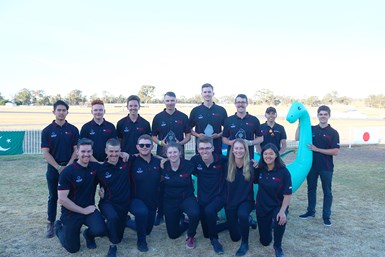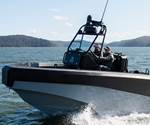ATL Composites contributes to student-built racing car
ATL Composites worked with Griffith University engineering and design students to construct a competitive racing vehicle featuring carbon fiber composites.

Source | ATL Composites
ATL Composites (Molendinar, Queensland, Australia) worked with Griffith University (Brisbane, Queensland, Australia) engineering and design students to expand their expertise in composite materials in the construction of a vehicle that competed in the December 2019 Formula SAE Australasia competition.
For the Formula SAE Australasia competition, around 35 universities from around the world design, build and compete in Formula-style, open-wheeled racing cars as part of a 12-month curriculum program.
The lightweight, 240-kilogram Griffith Racing Team car, known as GRT19 “Bronte,” placed third overall for Internal Combustion vehicles, their best performance yet.
According to Daniel Scherger, head of sponsorship at the Griffith Racing Team, “A major goal of the project was to complete a full aerodynamic package for our vehicle,” Scherger says. “Composite manufacturing has been an area of knowledge the team lacked after completing three vehicles previously with little composite material. This year we wanted to expand our knowledge and utilize the performance benefits of composite materials for the car.”

The Griffith Racing Team. Source | ATL Composites
The team worked with ATL Composites for supplies and advice. “ATL is a trusted local supplier in South East Queensland, so we could ensure that the use of their products would result in quality components for the vehicle this year,” Scherger says. “With ATL Composites being so close to our university we could have regular meetings with the business, and they provided fast turnarounds for products.”
The Griffith car included curved carbon fiber composite endplates. For this project, ATL provided carbon fiber and glass fiber rolls, as well as Divinycell foam, the Duratec surfacing range, Techniglue high strength adhesives and Kinetix laminating epoxy systems.
“We spent time with the Griffith designers to provide a comprehensive package and training in how to use the products to best advantage,” says Jonah Osborne from ATL Composites. “They picked it up quickly and were pleased with the strength and light weight they were able to achieve with composite materials.”
The project commenced in January 2019 with the aim of completing the vehicle by November in time for the event in early December.
“It was a major challenge for the team to learn composite manufacturing from scratch; from composite molds to manufacturing components like the endplates and diffuser. This provided a big learning curve for the team members involved,” Scherger says.
In 2020, the team plans to build its first electric vehicle. “In addition, we hope to build a composite monocoque chassis for our next vehicle,” Scherger says
Related Content
-
The Native Lab launches composites course training membership plan
Courses that touch on the fundamentals of composite materials, design, analysis and more are available for individuals and companies alike through TNL’s online platform.
-
Toray, University of Chicago speed up polymer recycling R&D
A jointly developed multi-scale computational predictive technique can accurately predict viscoelasticity from the chemical structures of polymers, ramping up product maturation.
-
Composites UK launches best practice guide for composites tooling
“Mould Tooling for Fibre-Reinforced Polymer Composites” is latest in Composites UK’s series of good practice guides, available online for free.

.jpg;width=70;height=70;mode=crop)














